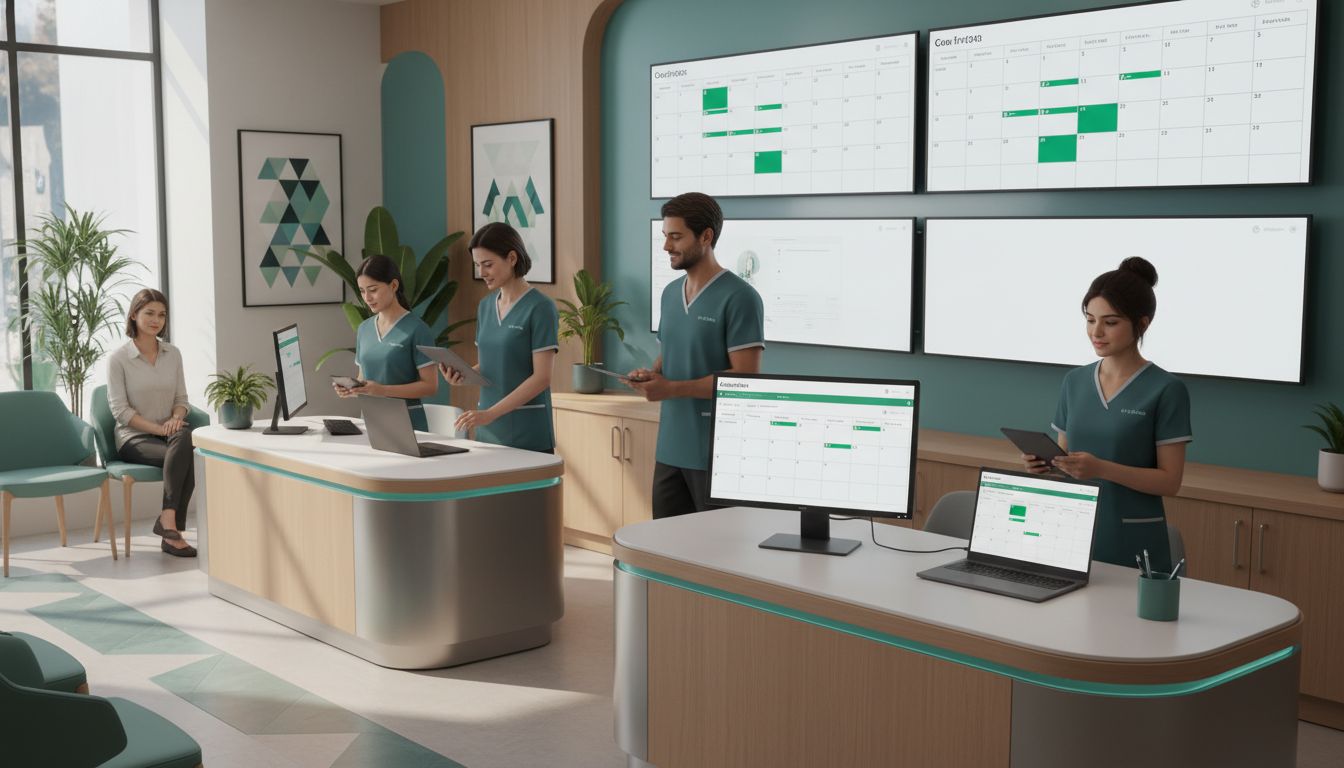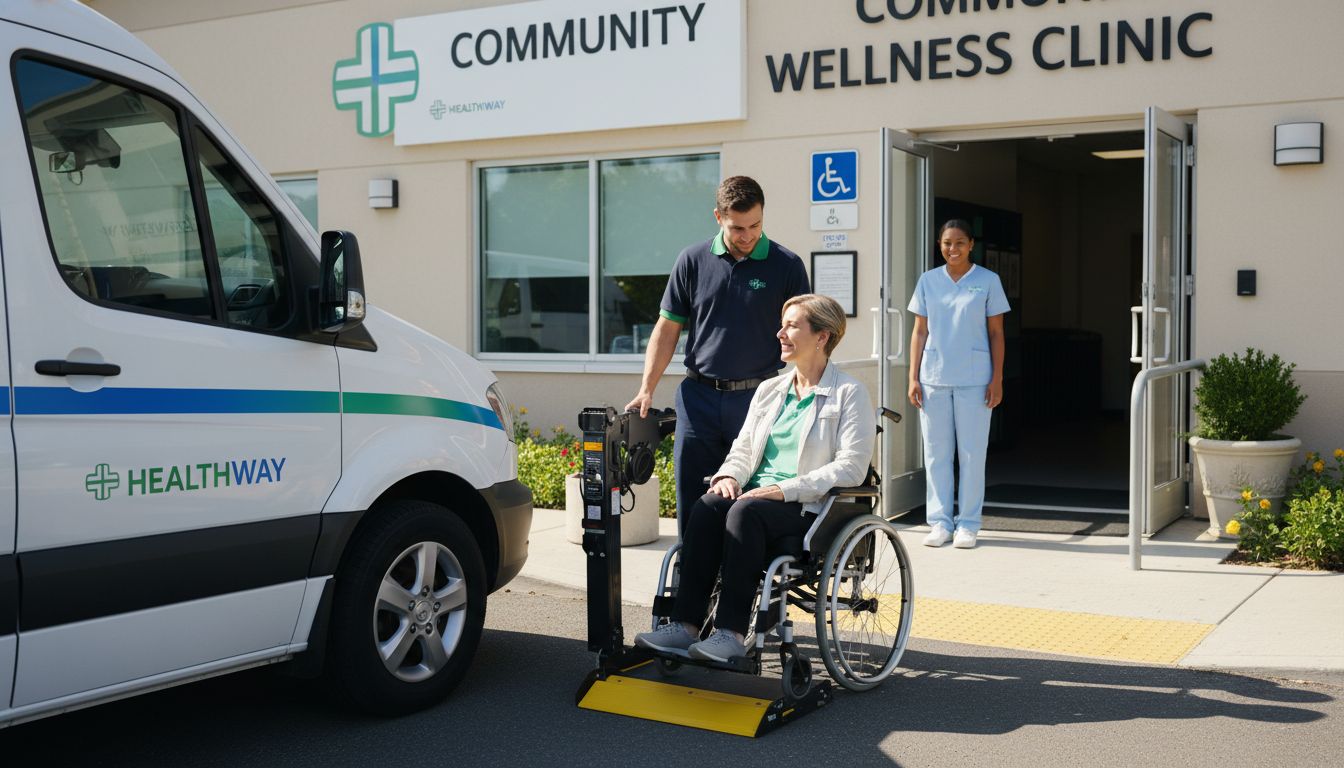What Is Vendor Credentialing? Essential Guide for Healthcare
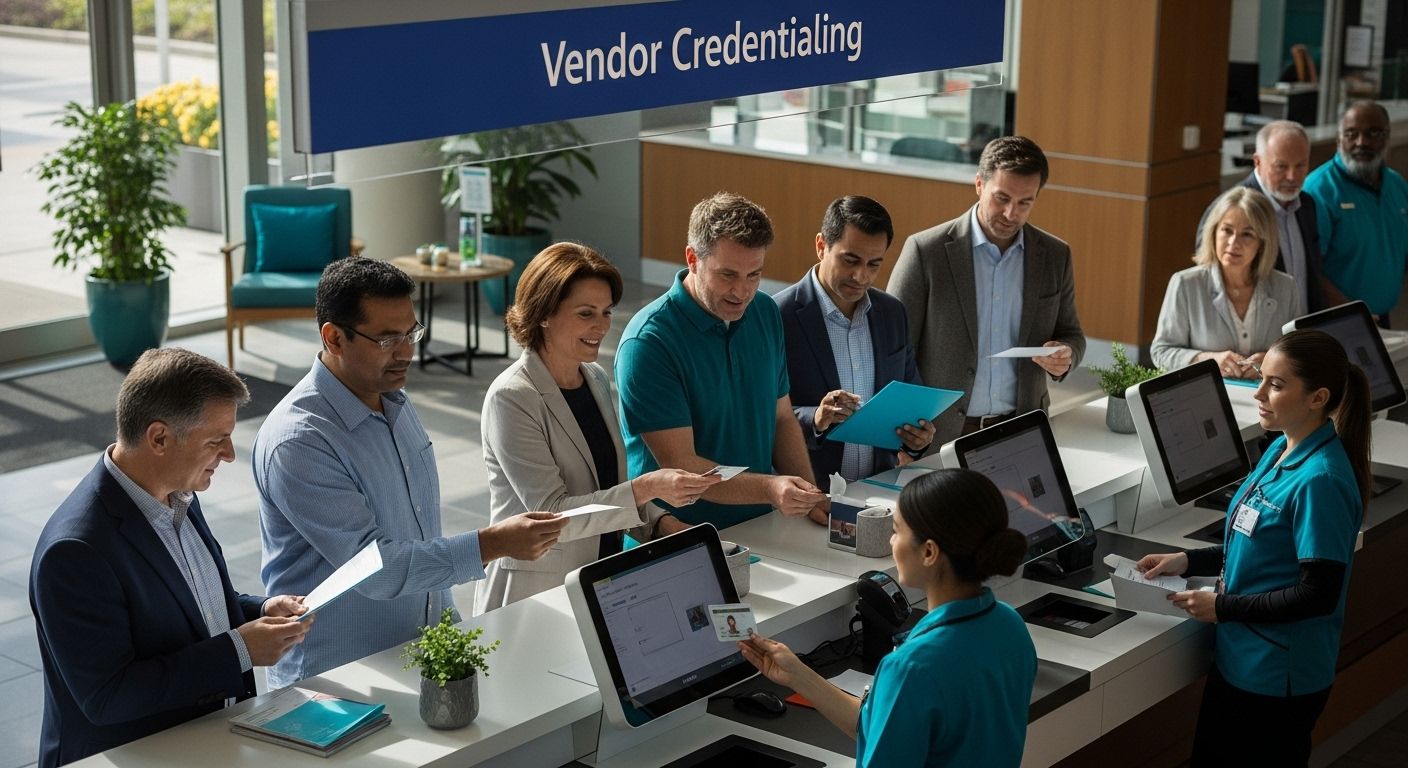
Vendor credentialing might sound like just another administrative hurdle for hospitals, but its impact reaches far beyond paperwork. Up to 70 percent of healthcare organizations report that proper credentialing directly reduces patient safety incidents and regulatory violations. Many believe the main challenge is simply collecting documents from vendors. Yet the real key is how credentialing turns every outside visitor into a proven protector of patient trust and facility security.
Table of Contents
- Understanding The Purpose Of Vendor Credentialing
- Key Processes And Requirements In Healthcare Settings
- Benefits Of Vendor Credentialing For Providers And Partners
- Best Practices For Compliance And Smooth Operations
Quick Summary
| Takeaway | Explanation |
|---|---|
| Vendor credentialing enhances patient safety. | It verifies vendor qualifications to prevent unauthorized access to healthcare facilities, safeguarding patients and staff. |
| Compliance with regulations is crucial. | Healthcare facilities must ensure vendor adherence to regulations like HIPAA and Joint Commission standards through thorough credentialing processes. |
| Documentation and verification are essential. | A comprehensive credentialing process includes background checks, certifications, and immunization records to confirm vendor competence. |
| Technology streamlines credentialing processes. | Implementing digital solutions automates verification, manages documentation, and tracks compliance effectively, reducing administrative workload. |
| Organizational commitment drives success. | A top-down approach ensures all departments prioritize vendor management, leading to improved safety and compliance across the organization. |
Understanding the Purpose of Vendor Credentialing
Vendor credentialing serves as a critical safety and compliance mechanism within healthcare organizations, establishing a systematic approach to verifying and monitoring external representatives who interact with medical facilities. Research from the Healthcare Information and Management Systems Society reveals that this process is fundamental to protecting patient safety, maintaining regulatory compliance, and ensuring professional standards across healthcare environments.
Safety and Risk Management
At its core, vendor credentialing is designed to mitigate potential risks associated with external representatives entering sensitive healthcare spaces. According to the Global Healthcare Exchange, the process requires vendors to meet specific criteria before gaining access to hospitals and medical facilities. These criteria typically include comprehensive background checks, proof of professional certifications, current immunization records, and mandatory safety training.
The verification process helps healthcare organizations control who enters their facilities, reducing potential security threats and ensuring that only qualified and authorized personnel interact with patients and medical staff. By implementing rigorous credentialing standards, hospitals can protect patient privacy, maintain workplace safety, and minimize potential liability risks.
Compliance and Regulatory Requirements
Vendor credentialing goes beyond basic safety measures by addressing complex regulatory compliance requirements. Healthcare facilities must adhere to strict guidelines set by organizations like HIPAA, Joint Commission standards, and other federal and state regulations. Learn more about navigating credentialing challenges and how technology can streamline this complex process.
Medical device representatives, pharmaceutical sales professionals, equipment maintenance technicians, and other external vendors must demonstrate their qualifications and understanding of healthcare protocols. This includes proving they have current vaccinations, completing required training modules, and maintaining appropriate professional credentials. The credentialing process ensures that these professionals understand and respect the unique environment of healthcare settings, protecting both patients and medical staff.
By establishing a standardized approach to vendor management, healthcare organizations can create a structured system that balances operational efficiency with rigorous safety standards. Vendor credentialing represents a proactive strategy that transforms potential risks into opportunities for enhanced institutional reliability and patient protection.
Key Processes and Requirements in Healthcare Settings
Vendor credentialing in healthcare settings involves a comprehensive and systematic approach to verifying and managing external representatives. Research from the National Center for Biotechnology Information highlights the critical nature of establishing robust verification processes that protect patient safety and institutional integrity.
Documentation and Verification Protocols
The credentialing process requires meticulous documentation and verification of multiple professional credentials. Healthcare organizations demand extensive documentation including professional licenses, immunization records, background checks, liability insurance certificates, and compliance training certifications. According to the Healthcare Information and Management Systems Society, these requirements ensure that every external representative meets stringent professional standards before gaining facility access.
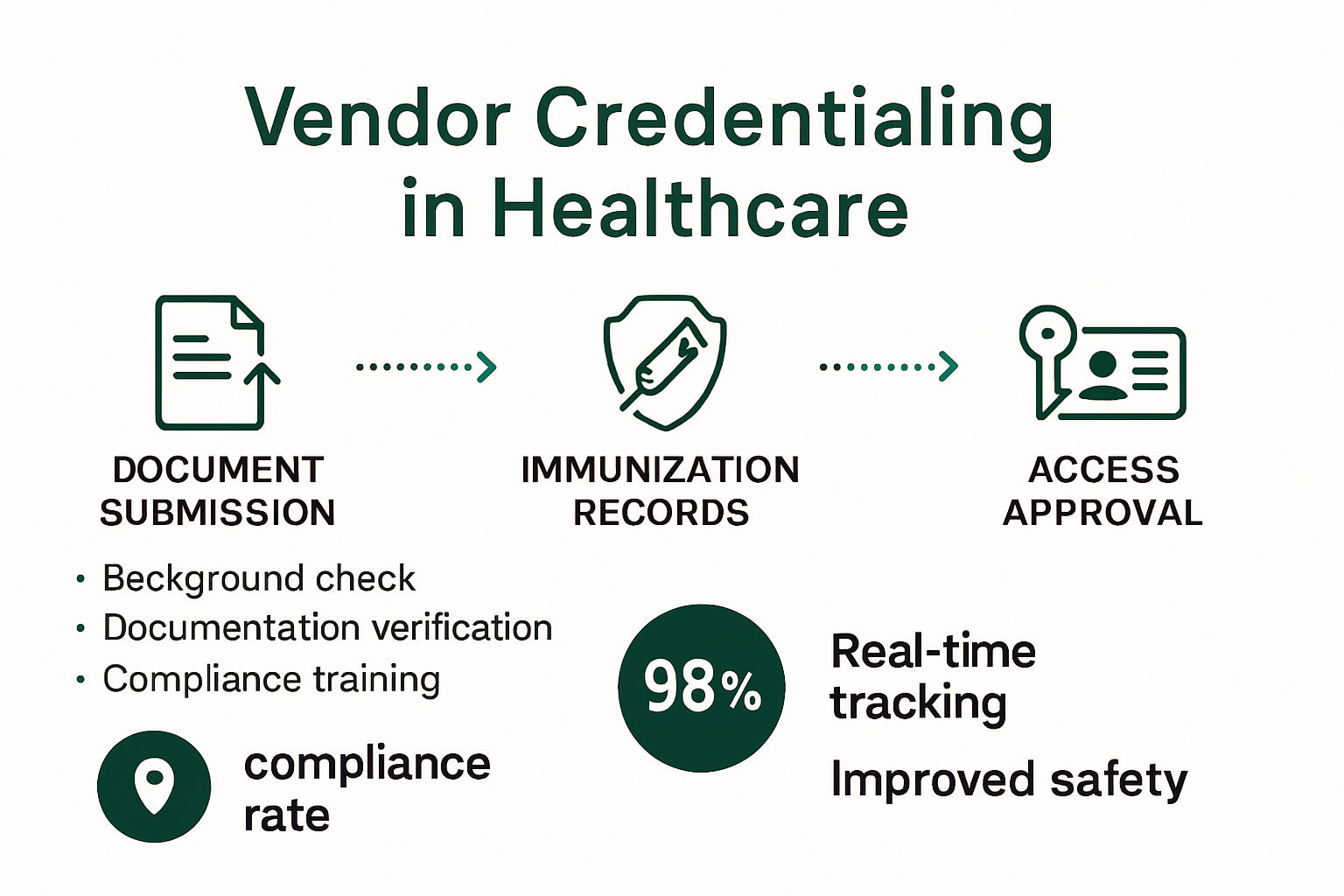
Typical documentation requirements include current professional licenses, proof of liability insurance, HIPAA compliance certificates, safety training completion records, and up-to-date immunization records. Organizations often implement digital tracking systems to monitor credential expiration dates and maintain real-time compliance status. Learn more about navigating complex credentialing requirements and streamline your verification processes.
To help clarify what documentation and verification steps are typically required from vendors in healthcare settings, the table below summarizes key credentialing requirements mentioned in the article.
| Credential Requirement | Purpose/Explanation |
|---|---|
| Professional Licenses | Verify vendor qualifications and legal compliance |
| Immunization Records | Confirm protection against infectious diseases |
| Background Checks | Assess safety and security risks |
| Liability Insurance Certificates | Ensure vendors can cover potential damages |
| Compliance Training Certificates | Show completion of required safety/regulatory training |
| Safety Training Completion | Verify understanding of facility-specific safety rules |
| HIPAA Compliance Certificates | Ensure vendor’s understanding of privacy regulations |
Compliance Monitoring and Access Control
Comprehensive compliance monitoring represents a critical component of vendor credentialing. Healthcare facilities must implement sophisticated systems that track vendor credentials, manage access permissions, and generate comprehensive audit trails. Research from Censinet indicates that effective compliance monitoring involves multiple interconnected strategies.
These strategies include real-time credential tracking, automated expiration alerts, digital documentation management, stringent access controls, and detailed reporting mechanisms. The goal is to create a dynamic system that prevents non-compliant vendors from entering sensitive healthcare environments while maintaining accurate and up-to-date records.
By establishing rigorous processes and leveraging advanced technological solutions, healthcare organizations can transform vendor credentialing from a administrative burden into a strategic risk management approach. The implementation of comprehensive verification protocols ensures that only qualified, compliant, and professional representatives interact with medical staff and patients, ultimately enhancing overall institutional safety and operational efficiency.
Benefits of Vendor Credentialing for Providers and Partners
Vendor credentialing offers substantial strategic advantages for healthcare providers and their partners, transforming traditional risk management approaches into comprehensive safety and operational optimization strategies. Research from Patient Safety and Quality Healthcare reveals that a well-implemented credentialing program creates significant value across multiple organizational dimensions.
For a quick comparison, the table below outlines the key benefits of vendor credentialing programs for healthcare providers and their external partners as described in the article.
| Benefit | Providers | Partners (Vendors) |
|---|---|---|
| Enhanced Risk Management | Protects patient data & safety | Demonstrates compliance & professionalism |
| Improved Compliance | Meets regulatory requirements | Streamlines access approval |
| Operational Efficiency | Reduces admin burden | Faster facility entry |
| Clear Communication | Centralizes information | Sets clear expectations |
| Reputation & Trust | Builds patient/staff confidence | Strengthens healthcare relationships |
Enhanced Risk Management and Compliance
Healthcare organizations benefit from vendor credentialing through dramatically improved risk mitigation strategies. According to Censinet, integrating robust compliance standards protects critical healthcare infrastructure by safeguarding patient data, medical devices, and complex supply chains. The process enables providers to systematically evaluate vendor qualifications, reducing potential liability and ensuring that only verified professionals interact within sensitive medical environments.
By implementing comprehensive credentialing protocols, healthcare institutions can proactively identify and address potential vulnerabilities. This approach transforms vendor management from a reactive administrative task into a strategic risk prevention mechanism. Learn more about transforming credentialing challenges and understand how technology can streamline complex verification processes.
Operational Efficiency and Communication
Vendor credentialing significantly improves operational workflows and interdepartmental communication. Research from Supply Chain Insights demonstrates that standardized credentialing processes create clear communication channels between healthcare providers and external partners.
The systematic approach eliminates redundant verification steps, reduces administrative overhead, and creates a centralized repository of vendor information. Digital credentialing platforms enable real-time tracking of vendor qualifications, automate compliance monitoring, and provide instant access to critical documentation. This streamlined approach allows healthcare organizations to focus more resources on patient care and strategic initiatives rather than getting bogged down in manual verification processes.
By establishing transparent, technology-driven credentialing systems, healthcare providers can create more resilient, efficient, and secure operational environments. The benefits extend beyond immediate risk reduction, fostering a culture of continuous improvement, accountability, and collaborative excellence across the healthcare ecosystem.
Best Practices for Compliance and Smooth Operations
Effective vendor credentialing requires a strategic and comprehensive approach that goes beyond basic documentation verification. Research from Patient Safety and Quality Healthcare emphasizes that successful credentialing programs demand commitment from all levels of healthcare organizations, creating a holistic system of safety and compliance.
Comprehensive Organizational Commitment
Successful vendor credentialing begins with top-down organizational commitment. Healthcare leaders must establish a culture that prioritizes comprehensive vendor management and safety protocols. According to Healthcare Purchasing News, this involves creating clear policies, implementing consistent standards, and ensuring that every department understands the critical nature of vendor compliance.
Key elements of organizational commitment include developing standardized credentialing guidelines, establishing clear communication channels, and creating a centralized system for tracking and managing vendor credentials. This approach ensures that all external representatives meet the same rigorous standards, regardless of their specific role or department. Learn more about transforming credentialing challenges and discover strategies for building a robust compliance framework.
Technology-Driven Compliance Management
Modern healthcare organizations are increasingly leveraging technology to streamline vendor credentialing processes. Research from Censinet highlights the importance of digital solutions in safeguarding patient data, medical devices, and complex healthcare supply chains.
Advanced credentialing platforms offer comprehensive features including:
- Real-time credential tracking and verification
- Automated expiration alerts and renewal notifications
- Centralized document management systems
- Integrated compliance reporting
- Secure access controls

These technological solutions transform vendor credentialing from a manual, time-consuming process into a dynamic, efficient system. By automating key verification steps, healthcare organizations can reduce administrative burden, minimize human error, and maintain up-to-the-minute compliance status.
Ultimately, best practices in vendor credentialing require a multifaceted approach that combines organizational commitment, technological innovation, and a proactive approach to risk management. Healthcare providers who invest in comprehensive credentialing strategies create safer, more efficient environments that protect patients, staff, and organizational integrity.
Frequently Asked Questions
What is vendor credentialing in healthcare?
Vendor credentialing is the process by which healthcare organizations verify and monitor the qualifications, certifications, and safety training of external representatives who access medical facilities, ensuring patient safety and regulatory compliance.
Why is vendor credentialing important for patient safety?
Vendor credentialing helps mitigate risks by ensuring that only qualified and trained personnel have access to healthcare environments, thus protecting patient privacy, safety, and minimizing potential liability.
What are the key requirements for vendor credentialing?
The key requirements typically include background checks, proof of professional licenses, immunization records, liability insurance certificates, and completion of safety and compliance training.
How can technology improve the vendor credentialing process?
Technology can enhance the vendor credentialing process by automating documentation management, tracking compliance in real-time, sending expiration alerts, and centralizing vendor information, thus increasing operational efficiency.
Ready to Transform Vendor Credentialing and Healthcare Operations?
The article highlights how vendor credentialing is more than just gathering paperwork. It is essential for protecting patient safety, meeting compliance standards, and reducing risks across your healthcare organization. If you are struggling with cumbersome manual processes or fear the consequences of missed steps, you are not alone. Many healthcare leaders find that outdated systems expose them to security risks, communication breakdowns, and costly errors—exactly what the article’s research warns against.
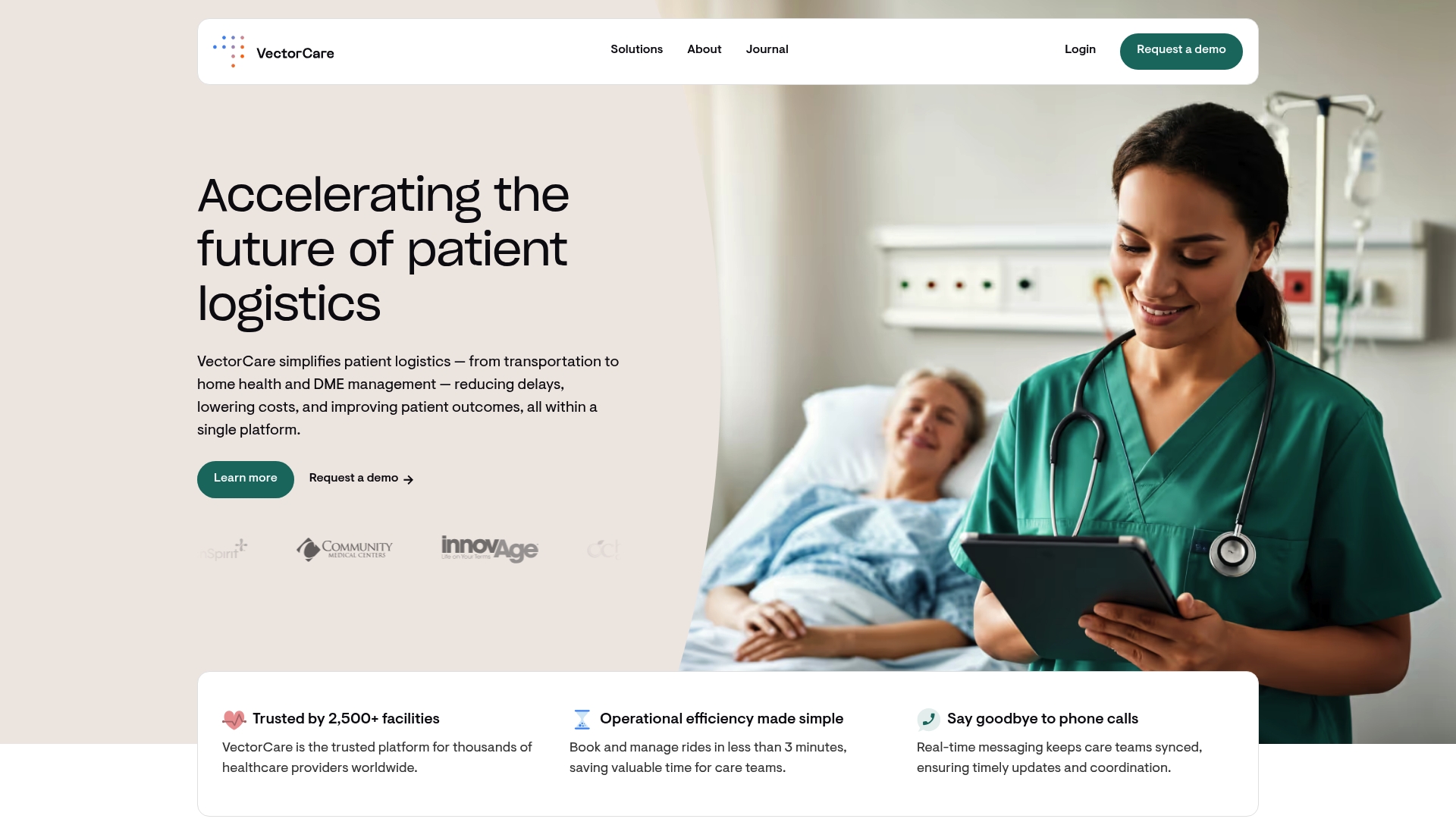
Do not let outdated vendor management slow you down or put your facility at risk. With VectorCare, you get a unified platform that tracks credentials, automates reminders, and integrates seamlessly with your daily logistics—from patient transportation to secure communication. See how our digital solutions help you achieve compliance, improve efficiency, and keep your organization audit-ready. Explore the details and schedule a walk-through at VectorCare’s site or dive deeper into how we simplify healthcare vendor management. Take action now and empower your team with confidence and control.
